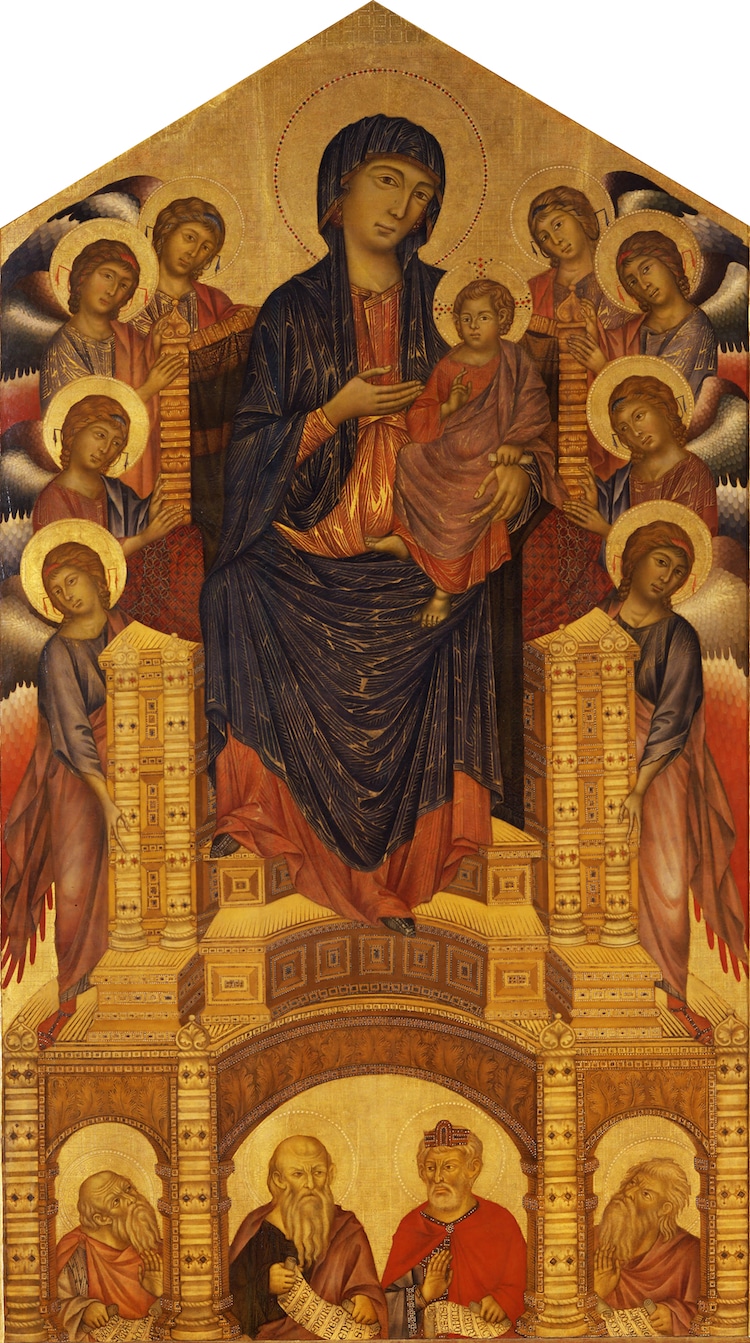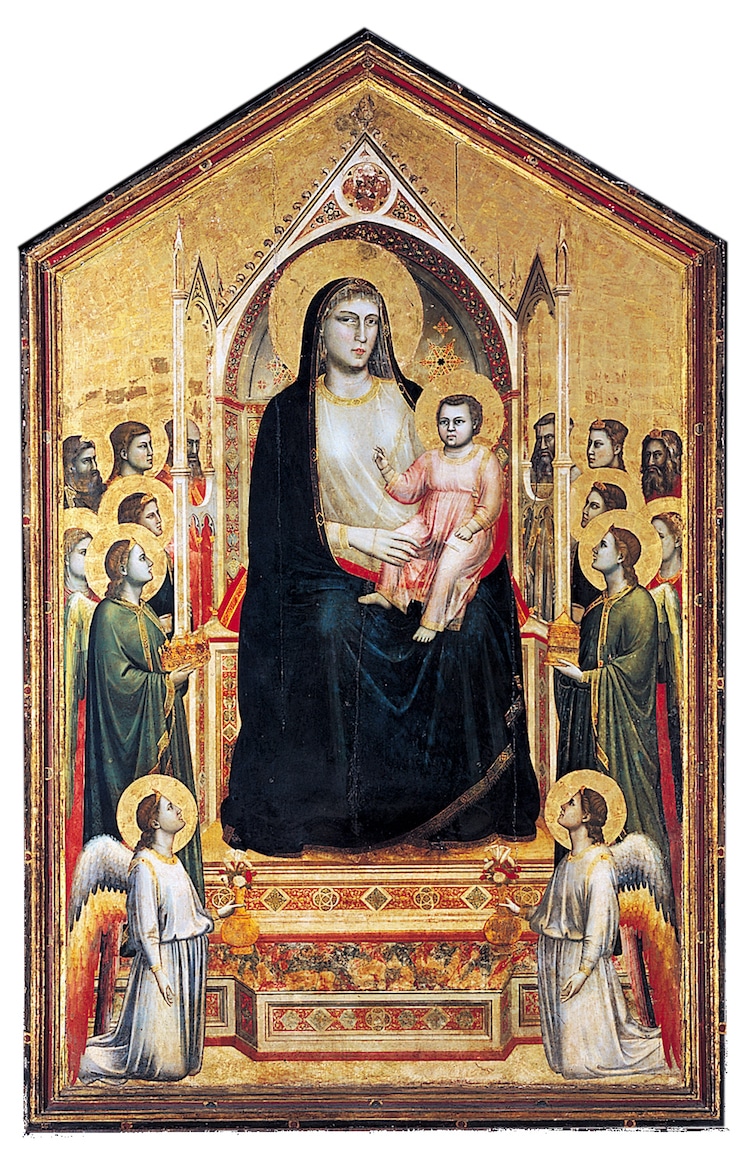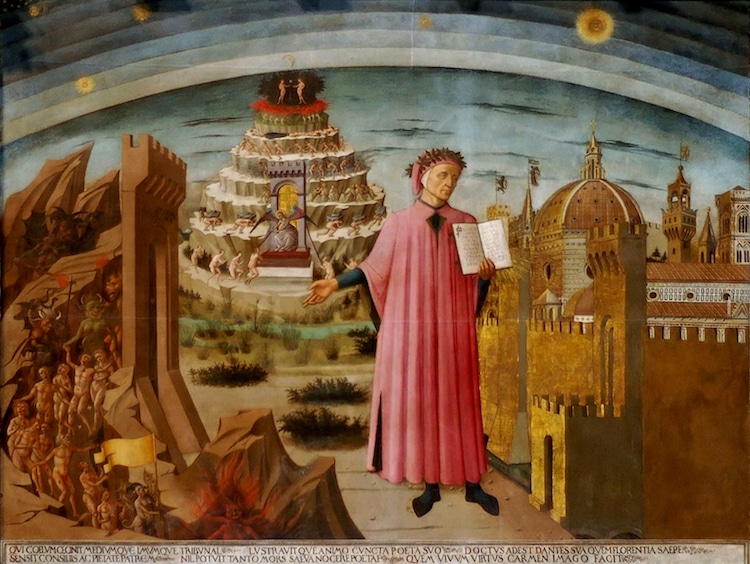The Father Of The Renaissance
The Italian Renaissance is regarded as one of the nigh vibrant periods in western art history. Artists like Leonardo da Vinci and Michelangelo created highly realistic works that emphasized a renewed interest in anatomy and proportion. To notice the catalyst for this remarkable modify, one has to expect back to a painter from the Proto-Renaissance period named Giotto.
At a time when the Byzantine manner of flat, stylized compositions dominated Italy, Giotto based his fine art on life. His naturalistic paintings fix the foundation for successors like Botticelli and Michelangelo. So much then that Giotto is often regarded as the begetter of the Italian Renaissance, and fifty-fifty the father of European painting.
Here, we explore Giotto's mythic life and the development of his naturalist mode.
Early Life
Giotto di Bondone (c. 1267-1337) was estimated to accept been born around the year 1267 near Florence. According to myth, Giotto was raised in the countryside as a young shepherd, where he often drew pictures of sheep on the ground. The story goes that one twenty-four hours, the esteemed Byzantine-style painter Cimabue spotted Giotto's talent and offered him an apprenticeship.
The Renaissance historian Vasari writes many allegorical examples of Giotto'due south prodigious talent. In one incident, Giotto painted a fly on the wall that was so realistic, Cimabue tried in vain to castor it off. In another, Giotto demonstrated his skill to the current pope by drawing a perfect circle without the use of any tool. Although the accurateness of these episodes is dubious, it is true that Giotto'south skills surpassed his tutor after not too long, and he established himself as a dominant painter.

Cimabue, "Maesta of Santa Trinita," c. 1280-ninety. (Photo: Wikimedia Commons [Public Domain])
The Scrovegni Chapel
Between 1303 and 1310, Giotto produced his nigh famous work within the Scrovegni Chapel in Padua. His frescoes were divided into 37 narrative scenes which focused on the theme of Salvation and emphasized the Virgin Mary. He arranged the cycle into 3 tiers on the walls and placed the painting of The Final Judgement on the counterfacade. The entire ornament of the Scrovegni Chapel is unified by Giotto'southward heavy utilise of the expensive ultramarine blue—although much of information technology has decayed over time.
Style
Dissimilar his tutor Cimabue, Giotto did not follow the Byzantine way, in which figures were stylized and floating. Instead, he drew from life—imbuing his characters with emotion and realism. Even the figures' clothes have naturalistic mantle. Additionally, Giotto uses foreshortening and forced perspective in many of his compositions, giving a sense of depth to his paintings.

Giotto, "No. 36 Scenes from the Life of Christ: 20. Lamentation (The Mourning of Christ)," c. 1304-1306. (Photo: Wikimedia Commons [Public Domain])
Later Years
Giotto accomplished remarkable fame and prestige during his lifetime and traveled to commissions across Italy, including Rome, Naples, and Assisi. In Naples, Giotto was made beginning court painter by King Robert with a yearly alimony. Eventually, however, Giotto returned to Florence, where he worked until his death in January of 1337.

Giotto, "Ognissanti Madonna," 1310. (Photo: Wikimedia Commons [Public Domain])
Legacy
Giotto'due south greatness was not only renowned among artist circles during his lifetime. He was as well immortalized by his contemporary Dante in The Divine Comedy when a painter in Purgatorio (Xi, 94-96) said: "Cimabue believed that he held the field/In painting, and at present Giotto has the cry,/ Then the fame of the former is obscure."
The emotion and naturalism of Giotto'southward painting was highly popular and spurred an increased interest in concepts of realism and perspective that had been dormant since antiquity. Eventually, these humanist interests culminated in the Renaissance, where Giotto'south name became legend.

Domenico di Michelino, "Dante and the Divine Comedy," 1465. (Photograph: Wikimedia Eatables [Public Domain])
Related Articles:
Who Is Titian? Exploring the Life and Art of the Renaissance Master of Color
The Significance of Botticelli'due south Renaissance Masterpiece 'The Birth of Venus'
Mannerism: The Style That Put an Elaborate Twist on Renaissance Art
8 Caravaggio Paintings That Bankrupt All the Rules (and Where to See Them)
The Father Of The Renaissance,
Source: https://mymodernmet.com/giotto-life-and-art/
Posted by: harkinshicle1975.blogspot.com


0 Response to "The Father Of The Renaissance"
Post a Comment